QuestionI have absolutely zero experience in owning fish. I have two tanks one is a 1o gallon tank(used to have turtles) the other(MiniBow 2.5 by All-Glass Aquarium, not sure of size, b/c it doesnt say anywhere!) i just bought for 3 Bettas(which i just found out can be very aggressive). Im giving the mean Betta away to a friend the other 2 are friendly together. Anyways, I would like to know what type of fish and plants i can put into each. Im looking for something colorful, affordable, and easy/moderate to take care of. I am willing to accomodate both tanks with heaters,filters(minibow came with filter), and any other equipment,supplies, etc. Please, when you find the time, help me. I rather trust a professional than myself! THANKS for any information at all!
AnswerHi Anthony;
For an established aquarium of smaller types of community fish there can safely be up to one inch of adult fish per gallon. An established aquarium is one that has been set up for at least 8 weeks with fish in it to biologically balance. Smaller types of community fish are generally fish that stay under 3 inches. One inch of adult fish per gallon means you will have to do a bit of research on each fish before you buy to be sure it doesn't get too big. Exceptions can sometimes be made on this population rule but for beginners it is best to stick to it as close as possible.
You will also want to know things like whether the fish like to be in groups (or 'schooling'), what temperature their water should be, what kinds of foods they need, how much filtration they require, etc.
The 2.5 bow tank holds 2.5 gallons. It is really too small for much. A betta is about all. The betta's body gets to be about 3 inches which slightly goes over the limit of 2.5 inches to the 2.5 gallon tank but bettas are not very messy fish unless overfed. The tank is too small to safely have a heater in it. The smallest thermostatically controlled heaters are 25 watts. Those are for 5 gallon tanks. Just keep the tank in a very warm place to avoid the temperature being too low.
Bettas cannot be kept together in tanks smaller than 55 gallons without a divider. They fight to the death. Even if yours are friendly right now they are simply young and will very soon start up on each other. It's just a matter of time. Bettas can be mixed with other fish though, with a few restrictions. Guppies, paradise fish, gouramis, should not be with a betta. The guppies tails provoke fighting (the bright colors) and the rest are in the same family as bettas (anabantidae) so they will fight with him too. Barbs are fin nippers and will tear up your betta.
What you really need is a good book on general aquarium keeping before you go further. It will give you some general info to go on. They tell about equipment and maintenance too. Here is a list of web pages to give you a start until you can get a book;
http://fins.actwin.com/mirror/begin.html
http://badmanstropicalfish.com/charts/good_bad.html
http://badmanstropicalfish.com/community.html
http://badmanstropicalfish.com/fish_chart.html
http://freshaquarium.about.com/cs/beginnerinfo/a/fishcalc.htm
http://www.acicorp.us/cleaning_aquarium.php
http://www.fishinthe.net/html/section-1.html
http://freshaquarium.about.com/cs/qa/l/blqa2006.htm
http://groups.msn.com/TheAquariumGroup/gettingstarted.msnw
Something very important you will want to know about is the break-in period. Here is my article that will help you through it;
**********
New Tank Syndrome or Break-in Period
So you have a new tank and you filled it up, put the filter together, mounted the heater into place and turned on the lights. You have all the plants and decorations where you want them....
You are ready for fish.
But, your filter is not ready for a full tank of fish yet.
The filter is running and moving the water and cleaning out crud, right? Of course!
But a very important part of your filter is the part you can't see. An aquarium filter removes the larger visible stuff, but it also must remove the dissolved fish waste that turns into ammonia in the water. To do this, special bacteria must grow in the filter system and on the particles of gravel in the bottom of your tank. This process occurs even on a limited scale in little fish bowls that have no filter in them.
This is "New-Tank Syndrome" or the "Break-in Period". The entire process takes 6 to 8 weeks to complete because these "nitrifying" bacteria grow quite slowly.
Start off with only one or two hardy fish (no more than 2 total inches of fish) for every ten gallons of water and don't add more until the 6 to 8 weeks has gone by. Hard to be patient, but it is worth it to keep your fish alive and healthy. As a matter of fact, the bacteria cannot develop without fish in the tank. You can let that tank sit forever without fish in it, but as soon as the first fish goes in the process begins. Avoid changing the filter pads during break-in. This removes the bacterial colonies that are essential to a balanced aquarium. You can rinse the filter pad out in a container of aquarium water. This will preserve most of the bacteria colonies while still allowing your filter to flow freely. Even using bacteria additives and water conditioners when you first set up the tank will not make a tank begin the cycle by itself. If there are no fish to provide food (fish waste) for the bacteria, the beneficial bacteria cultures will die and you will have to start the colonies all over again once fish are added to the tank. Once the tank has completed the initial cycle, you can change the filter pads every 4 weeks or so. But for now, just rinse them.
Feed your new fish VERY lightly. Any excess food will cause additional waste your system cannot afford to have right now. If you see food floating around or lying on the plants and gravel after five minutes, too much food is going into the tank. Cut back a little each time you feed until it is ALL gone 5 minutes after you feed them. Feed them once a day.
During this "break-in period" your tank will become cloudy and milky looking. You may have to tolerate this for the entire break-in period but it is only temporary. Changing 25% of the water three times a week until the break-in period is over helps a great deal. Changing water reduces the ammonia and nitrites that rise while the bacteria continues to multiply. If ammonia and/or nitrites become too high, your fish will become stressed and possibly die. Use a good water conditioner when you replace the water and make sure it is the right temperature to avoid shocking your fish.
When the break-in is over after 6 to 8 weeks and there are no nitrites or ammonia present in the water you can slowly add more fish. Add one or two every week until you reach the desired population. This allows the bacteria to adjust to the new population every time before adding more. Monitor the nitrites and ammonia to be sure they don't come up. If they do, make a 25% water change and check them again. Don't add the next fish until the levels are down again.
The safe maximum population for any size tank is one inch of adult fish for every gallon of water in the tank. Do some research to be sure of the fish you are interested in. Even though they are small when you buy them, you have to base your population calculations on full-sized adult fish. Many hobbyists have up to two inches per gallon but this can be risky. If a water quality issue arises or a disease occurs it will spread fast and furious in an over-populated tank. In any case, 25% water changes every week to two weeks are absolutely essential for the health of your fish.
Following these guidelines will help you get your new tank on the right track.
**********
At Your Service;
Chris Robbins
Come on over and join us on the freshwater fish forum at About.com to get even more information too;
http://freshaquarium.about.com/od/questionsanswers/a/naavigateforum.htm

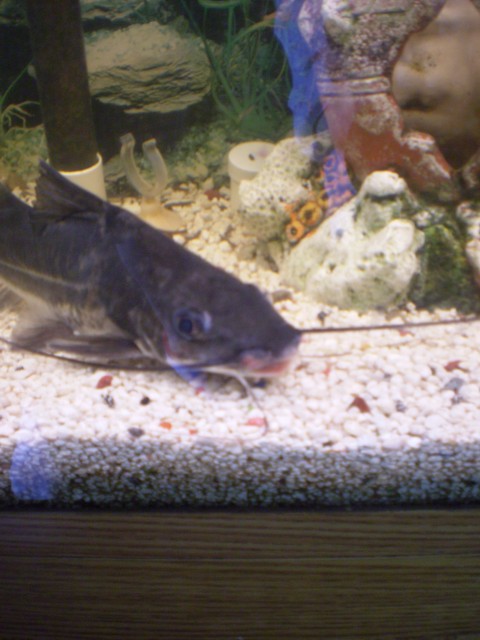 feeler rot / air gulping
QuestionRamona
QUESTION: Hi, I submitted this sa
feeler rot / air gulping
QuestionRamona
QUESTION: Hi, I submitted this sa
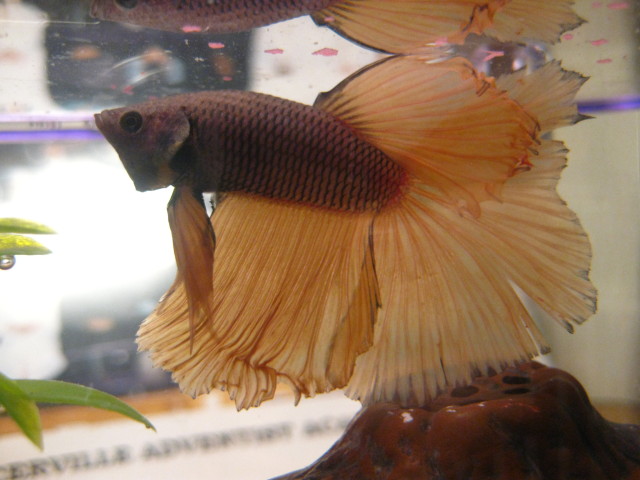 Betta dealing with fin rot?
Question
Dorado
Dear Ms. Beatty,
I bought
Betta dealing with fin rot?
Question
Dorado
Dear Ms. Beatty,
I bought
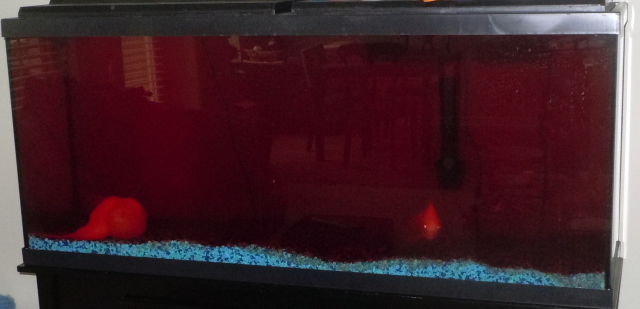 Update on Lionhead Oranda
Question
After effects of tetra
Hello again! Tha
Update on Lionhead Oranda
Question
After effects of tetra
Hello again! Tha
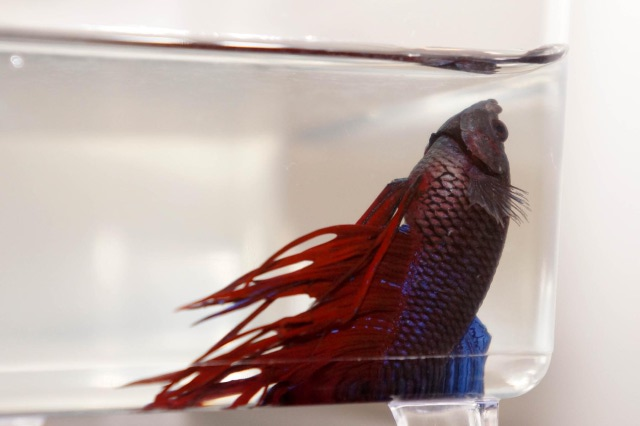 Betta has big belly
Question
Sick little Red
My betta is 1 year old
Betta has big belly
Question
Sick little Red
My betta is 1 year old
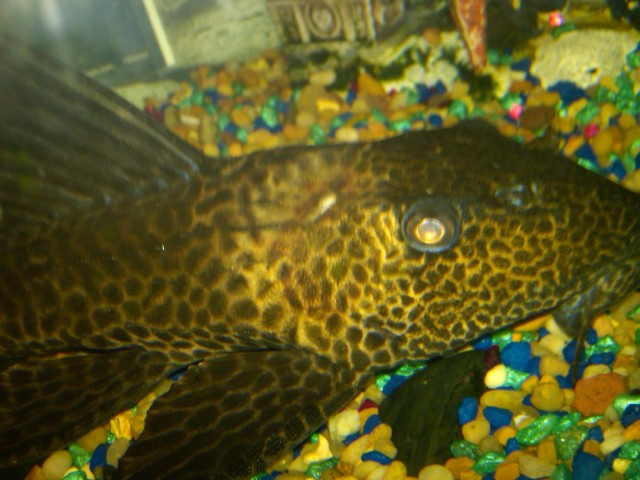 My 4 year old Platys
QuestionQUESTION: It has developed a gash on the back o
My 4 year old Platys
QuestionQUESTION: It has developed a gash on the back o